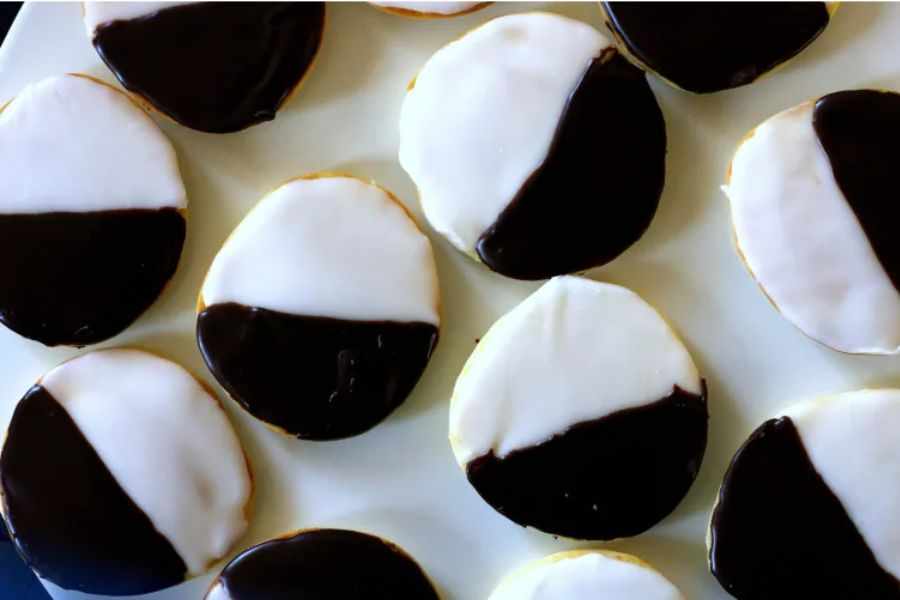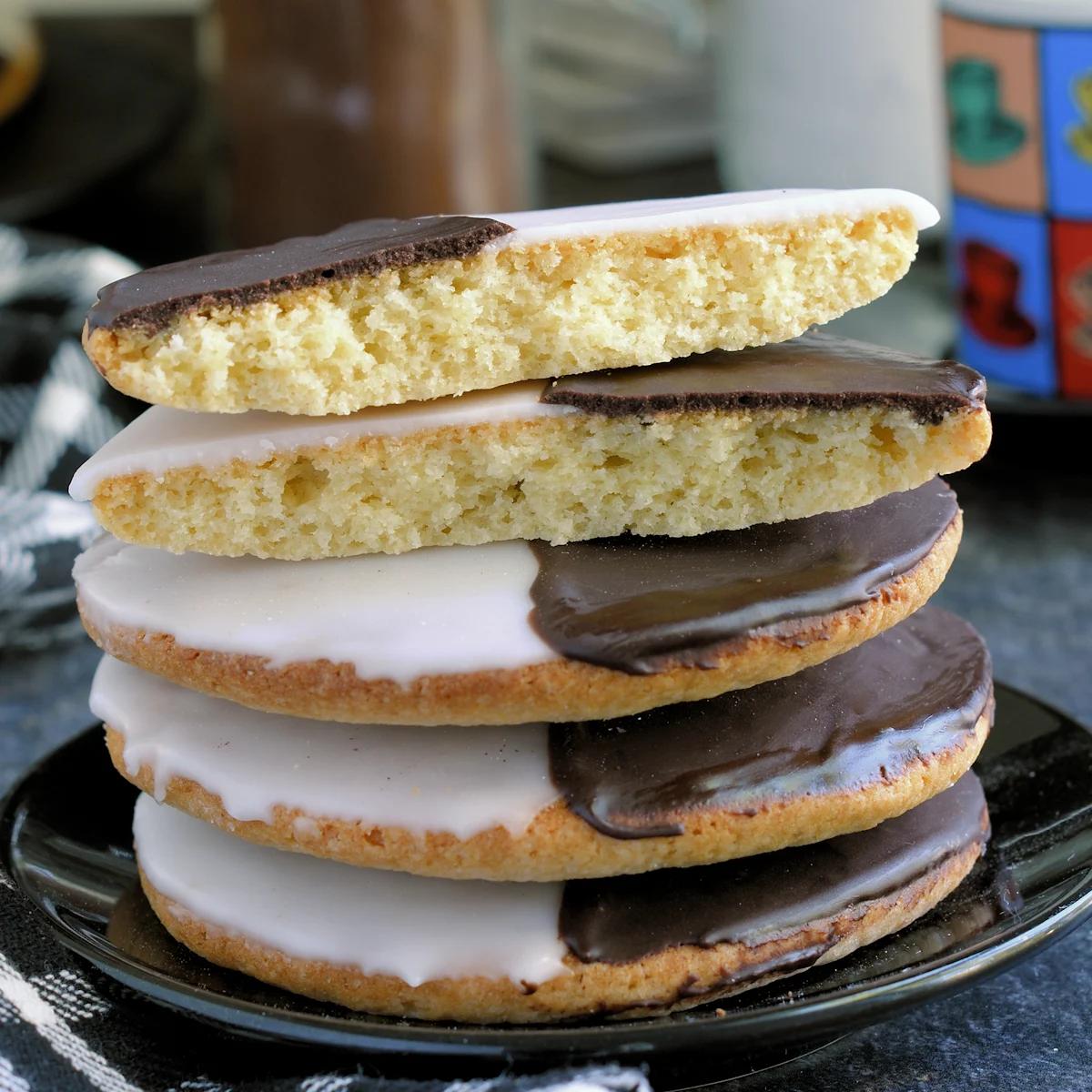
When it comes to iconic bakery cookies, few treats stand out as much as the black and white cookie. With its glossy two-toned icing and soft, cake-like base, this cookie has transcended generations, cultures, and even continents. It’s more than just a sweet snack—it’s a symbol of balance, nostalgia, and timeless appeal. But what exactly makes the black and white cookie such an enduring classic? Let’s take a deep dive into its history, flavor profile, cultural significance, and the reasons it continues to charm cookie lovers everywhere.
A Bite of History: Origins of the Black and White Cookie
The black and white cookie traces its roots back to early 20th-century New York bakeries. German and Eastern European immigrants brought with them recipes for soft, rounded cake-like cookies that would eventually evolve into the treat we know today. Instead of being crisp like many traditional bakery cookies, these were more reminiscent of small, handheld cakes.
What truly set them apart, though, was the signature icing—half chocolate and half vanilla. This duality wasn’t just about aesthetics. It reflected the bakers’ desire to offer the best of both worlds in a single dessert:
the rich decadence of chocolate
the comforting sweetness of vanilla
Over time, the cookie became a staple in Jewish bakeries, delis, and pastry shops across New York City.
By the mid-20th century, the black and white cookie wasn’t just a bakery staple—it had become a cultural icon. Appearing in television shows, movies, and even political discussions, it took on a larger-than-life identity, symbolizing unity and tradition.
The Perfect Balance of Flavor and Texture
At first glance, the black and white cookie looks simple, but its beauty lies in its complexity.
The base is not quite a cookie in the traditional sense. Instead, it has a dense, cake-like texture that feels both soft and satisfying.
The slight hint of lemon in many recipes adds a refreshing brightness that balances the sweetness of the icing.
Then comes the famous topping: one half covered in velvety chocolate fondant, the other in smooth vanilla.
The dual flavors mean every bite offers contrast—bittersweet against sweet, dark against light. Some fans carefully eat one side at a time, while others savor bites that capture both flavors together. Either way, the experience feels indulgent yet comforting.
This balance is what has made the cookie such a standout among bakery cookies. Unlike trend-driven desserts that come and go, the black and white cookie continues to deliver an experience that appeals to all ages and palates.
Symbolism Beyond the Sweetness
The cookie isn’t just beloved for its taste—it carries symbolic weight. The half-and-half design has often been seen as a metaphor for:
harmony
balance
social unity
In fact, one famous television sitcom once used the black and white cookie as a symbol of peaceful coexistence.
For many, this simple bakery item has grown into a cultural statement. Sharing a black and white cookie isn’t just about enjoying dessert; it’s about celebrating differences while embracing togetherness. That deeper meaning has helped it remain relevant in modern times, where food often represents more than just sustenance—it tells a story.
A Staple in Bakeries Everywhere
Though the black and white cookie is most closely tied to New York, its influence has spread far beyond city limits. Today, it can be found in bakeries across the United States, often sitting proudly in glass display cases alongside rugelach, linzer tarts, and other traditional treats.
Unlike trendier desserts that fade with changing fads, this cookie holds its place as a staple. It’s not flashy or overly complicated—it’s classic, reliable, and instantly recognizable. For bakeries, offering the black and white cookie is more than just about sales; it’s about maintaining a connection to tradition and meeting the expectations of customers who view it as a must-have.
Reisman’s Bakery, for example, has continued to honor this tradition by crafting black and white cookies with the same care and authenticity that made them beloved in the first place. For loyal fans, it’s not just about buying a cookie—it’s about experiencing a slice of nostalgia with every bite.

The Nostalgia Factor
One of the most powerful reasons behind the cookie’s timeless appeal is nostalgia. For many, the black and white cookie brings back memories of:
childhood visits to the bakery
family celebrations
late-night snacks after a trip to the deli
Food has a unique way of anchoring memories, and this cookie is no exception. Its familiar look and taste create an instant sense of comfort, reminding people of simpler times. Even for those who didn’t grow up with it, the cookie carries an old-world charm that feels welcoming. In a fast-paced, ever-changing world, the black and white cookie offers a sweet reminder of stability and tradition.
Reinvention in Modern Times
While tradition is key to its appeal, modern bakers haven’t shied away from putting creative spins on the black and white cookie. Today, you might find:
mini versions
giant oversized versions
vegan and gluten-free adaptations
Some bakers experiment with flavored icings—such as espresso or strawberry—while others incorporate different textures into the base.
Yet, no matter how much reinvention occurs, the original remains the benchmark. The balance of chocolate and vanilla, combined with the cake-like texture, is what people come back for. Even when experimenting, bakers strive to preserve the qualities that make it timeless.
This adaptability is another reason the black and white cookie continues to thrive. It honors its roots while also leaving space for creativity.
Why It Stands Out Among Bakery Cookies
There are countless varieties of bakery cookies—chocolate chip, oatmeal raisin, sugar cookies, and more. Each has its loyal fans, but the black and white cookie holds a unique place. It’s not just about flavor or texture—it’s about identity.
Key reasons it stands out:
Many cookies are considered snacks, but the black and white cookie feels like an event.
Its size alone makes it substantial enough to share or savor slowly.
Its two-toned icing offers more visual appeal than many other cookies.
Its history ties it to cultural traditions that other cookies simply can’t claim.
For these reasons, it’s not just “another cookie” on the bakery shelf. It’s a classic that has earned its place at the table of iconic desserts.
The Future of a Classic
As long as there are bakeries, there will likely be black and white cookies. Their continued popularity proves that some recipes simply don’t go out of style. While dessert trends shift from cronuts to cake pops to artisan donuts, the humble black and white cookie endures, offering the same reliable charm as it did a century ago.
Reisman’s Bakery and other traditional bakers ensure that new generations discover this timeless classic, keeping its legacy alive. And with modern adaptations catering to diverse dietary needs, the bakery cookies fan base only continues to grow.
Final Thoughts
So, what makes the black and white cookie a timeless classic?
It’s the perfect combination of history, flavor, symbolism, and nostalgia.
It’s a dessert that has outlasted fads, charmed generations, and carved out a special place in the world of bakery cookies.
Whether you savor one side at a time or enjoy the perfect bite of chocolate and vanilla together, the black and white cookie is more than just a treat—it’s a story baked into every bite. A story of balance, tradition, and sweetness that never goes out of style.









Write a comment ...